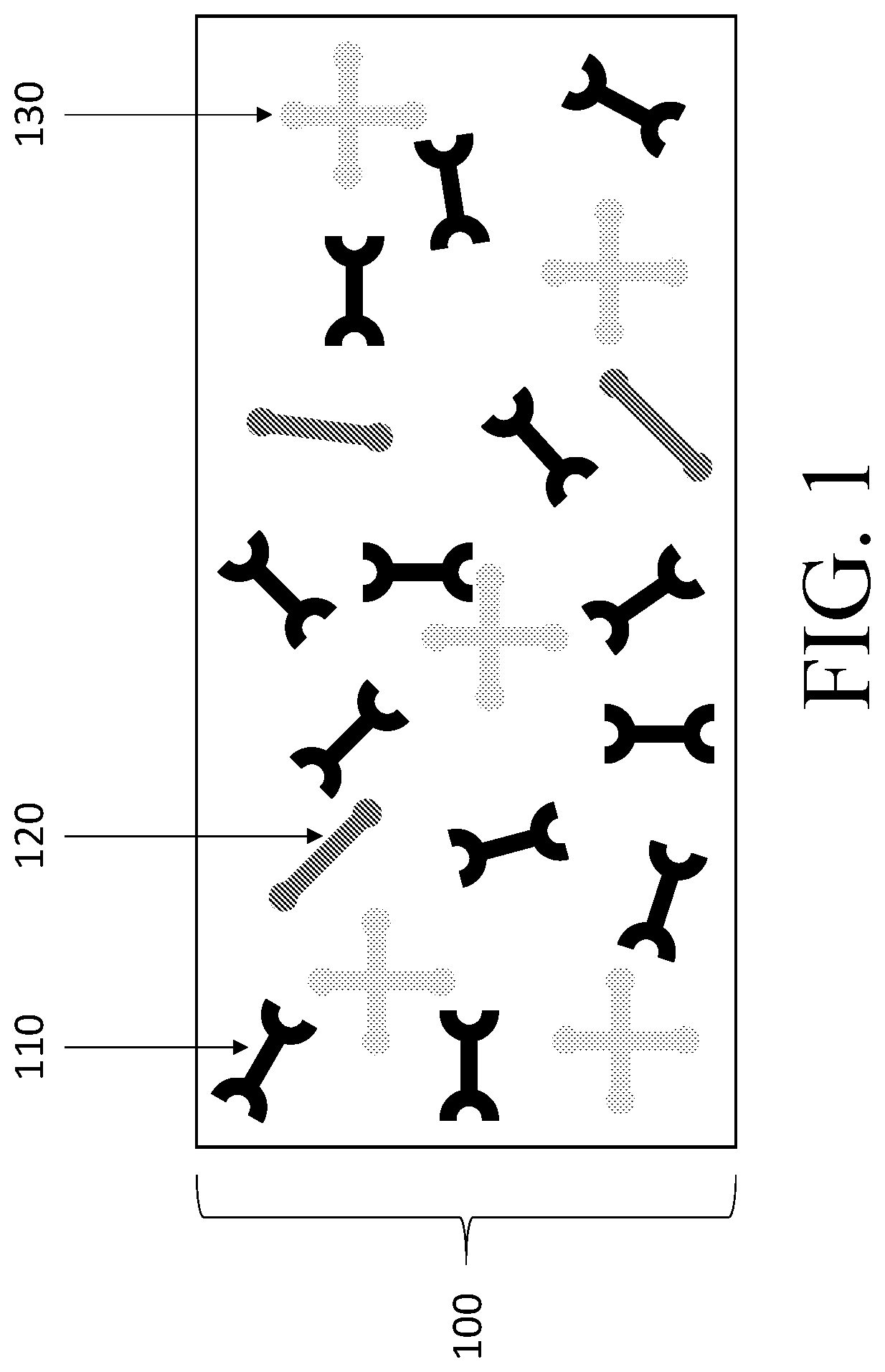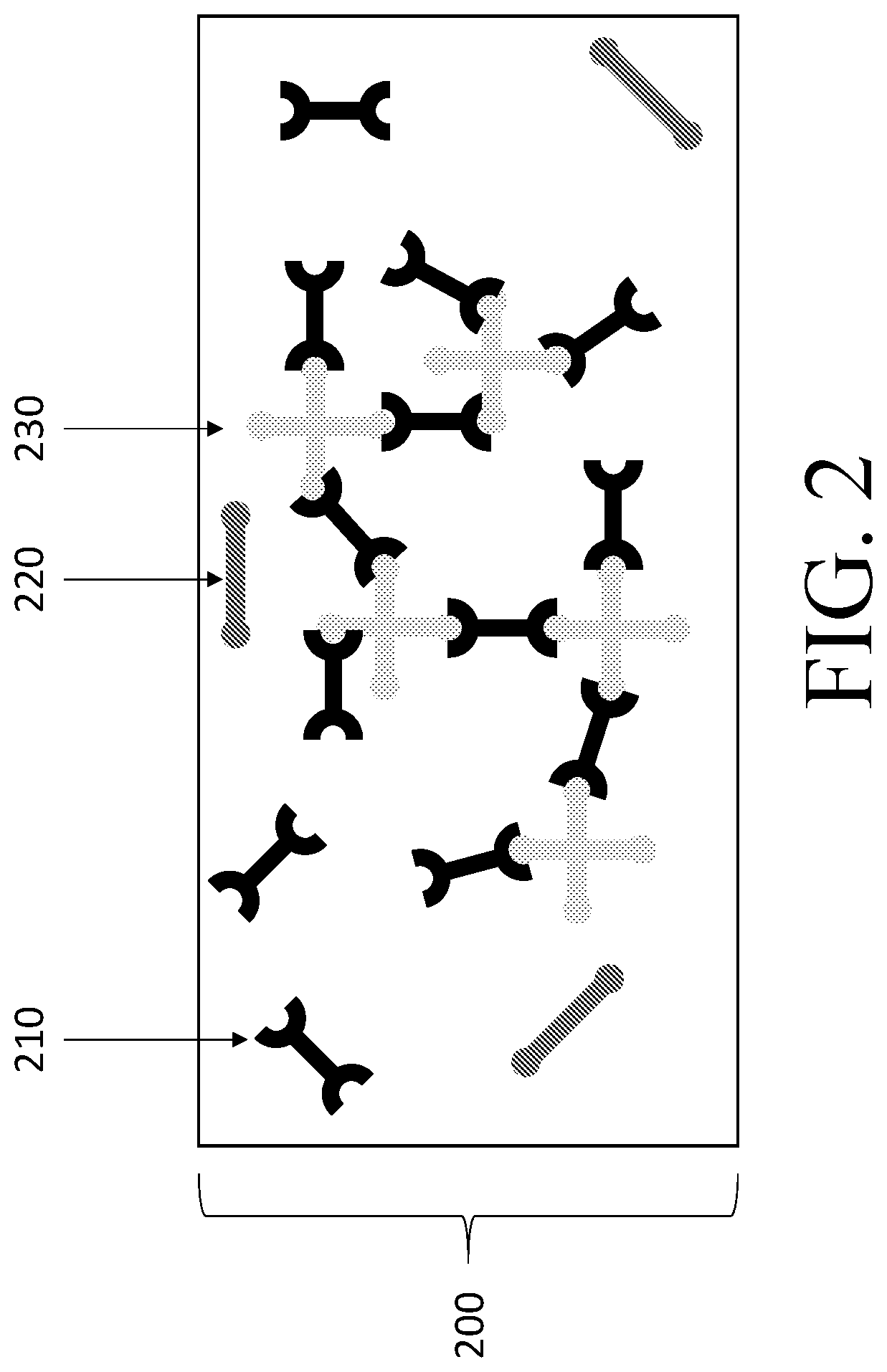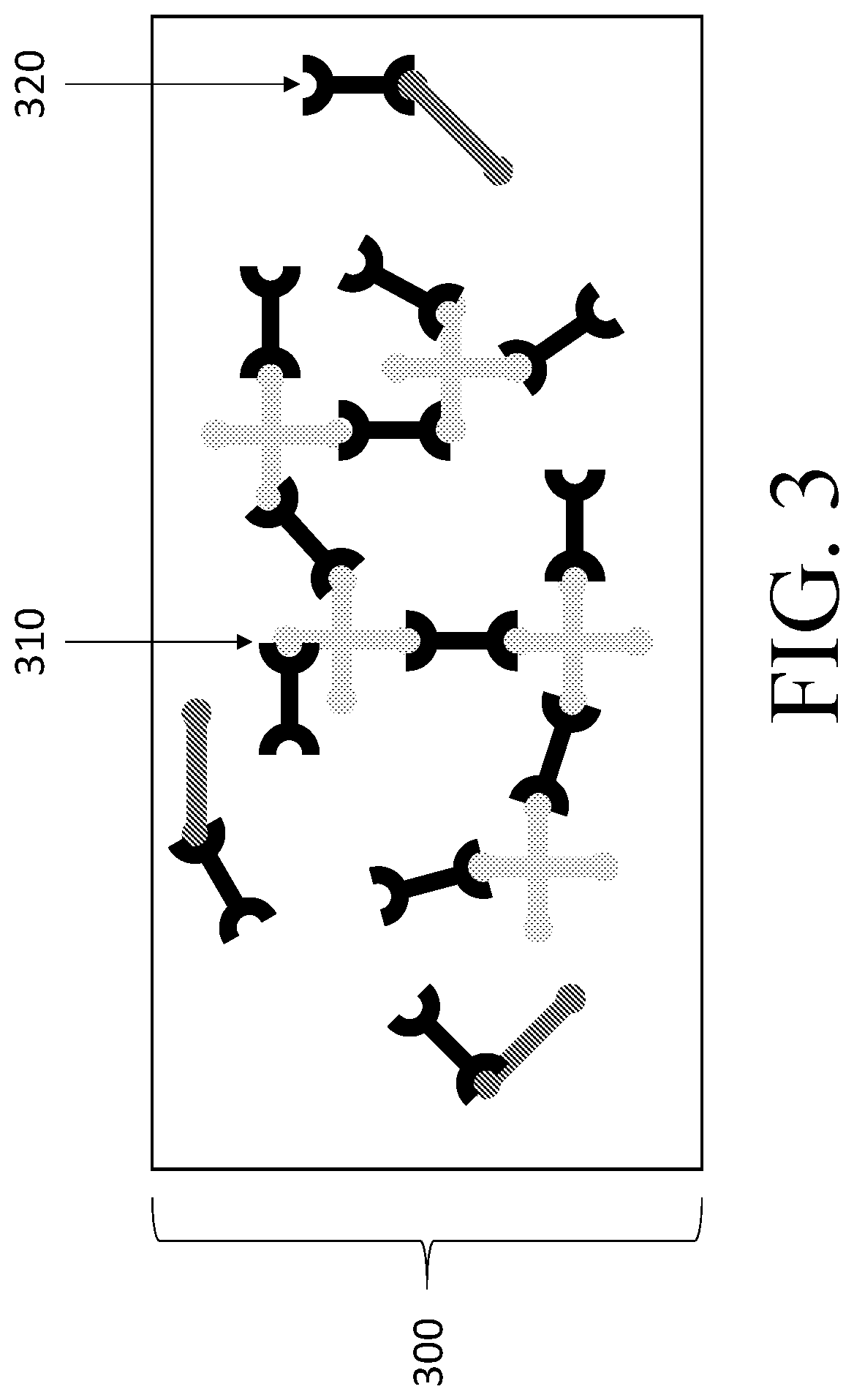Optically clear adhesives using semi-interpenetrating polymer networks
a technology of semi-interpenetrating polymer and adhesive, applied in the field of optically clear adhesives, can solve the problems of low elastic toughness, low elastic toughness, and intransparency of the network forming materials, and achieve the effects of high elastic toughness, good adhesion to glass, and enhanced elastic toughness
- Summary
- Abstract
- Description
- Claims
- Application Information
AI Technical Summary
Benefits of technology
Problems solved by technology
Method used
Image
Examples
example 1
[0029]A semi-interpenetrating optically clear adhesive monomer mixture is prepared by adding 47.2 g 2,2′-(ethylenedioxy)diethanethiol, 43.5 g Trimethylolpropane triglycidyl ether, 9.25 g trimethylolpropane diallyl ether, 1.0 g 2,2-Dimethoxy-2-phenylacetophenone and 1.0 g triethylamine in a container. The solution is then mixed using a planetary mixer at 2350 RPM for 1 minute to homogenize the monomer mixture. Next, the monomer mixture is dispensed atop a display module and a cover lens is laminated atop the liquid monomer mixture. The stack is then cured at 80° C. for 60 minutes to form the polysulfide thermoset network. Next, the stack is placed under a UV lamp and exposed to 1 J / cm2 of 365 nm light to form the polysulfide thermoplastic network. All curing is performed under ambient atmospheres, with no need for vacuum, dry or inert atmospheres.
example 2
[0030]A thermoplastic solution is prepared by dissolving 10 g of poly(methyl methacrylate) (PMMA) into 90 g acetone. Next, a crosslinked silicone optically clear adhesive film is soaked in the solution while stirring for 60 minutes, allowing the PMMA chains to diffuse into the silicone OCA. The silicone OCA is then removed from the thermoplastic solution and baked at 100° C. for 60 minutes to remove any remaining acetone from the film, leaving behind a semi-interpenetrating optically clear adhesive. The film is then applied atop a display module and a cover lens is then applied atop the silicone film. An optional degassing step is performed (60 minutes, <100 mTorr) to remove any trapped gasses between the cover lens, OCA film and display module.
example 3
[0031]A semi-interpenetrating optically clear adhesive monomer mixture is prepared by adding 52.3 g 2,2′-(ethylenedioxy)diethanethiol, 47.7 g triallyl isocyanurate, and 1.0 g 2,2-Dimethoxy-2-phenylacetophenone in a container. The solution is then mixed using a planetary mixer at 2350 RPM for 1 minute to homogenize the monomer mixture. Next, 10 g of poly(methyl methacrylate) (PMMA) is added to the solution and the solution is again mixed using a planetary mixer at 2350 RPM for 1 minute. The monomer mixture is dispensed atop a display module and a cover lens is laminated atop the liquid monomer mixture. Next, the stack is placed under a UV lamp and exposed to 1 J / cm2 of 365 nm light to form the polysulfide thermoset network, containing PMMA chains entangled in the network. All curing is performed under ambient atmospheres, with no need for vacuum, dry or inert atmospheres.
PUM
| Property | Measurement | Unit |
|---|---|---|
| elastic toughness | aaaaa | aaaaa |
| transparency | aaaaa | aaaaa |
| transparent | aaaaa | aaaaa |
Abstract
Description
Claims
Application Information
 Login to View More
Login to View More - R&D
- Intellectual Property
- Life Sciences
- Materials
- Tech Scout
- Unparalleled Data Quality
- Higher Quality Content
- 60% Fewer Hallucinations
Browse by: Latest US Patents, China's latest patents, Technical Efficacy Thesaurus, Application Domain, Technology Topic, Popular Technical Reports.
© 2025 PatSnap. All rights reserved.Legal|Privacy policy|Modern Slavery Act Transparency Statement|Sitemap|About US| Contact US: help@patsnap.com



